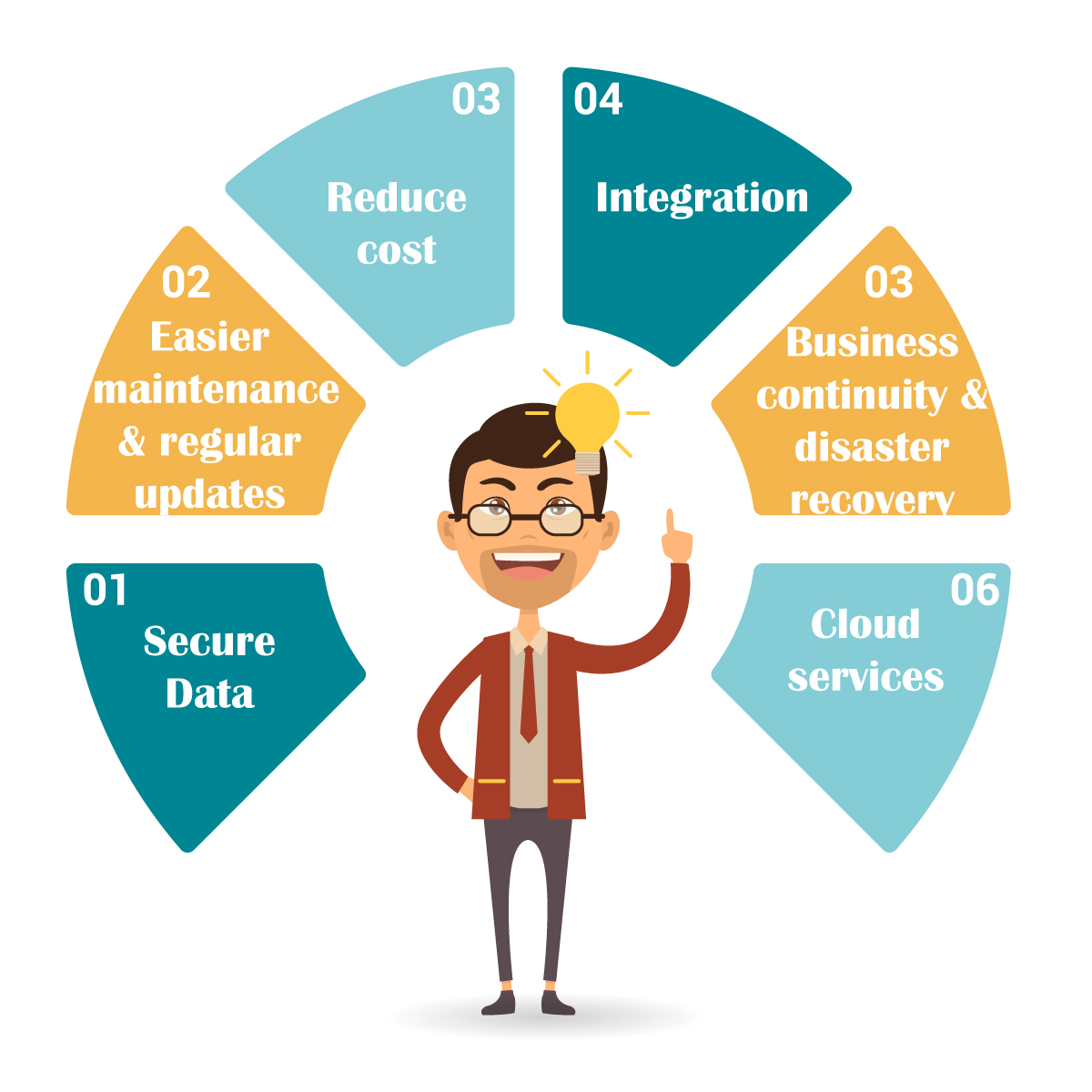Benefits of moving your business applications to the cloud
Cloud technology is fast becoming a mainstream staple for modern businesses as well as charities. As technology advances, the number of benefits that moving to the cloud can bring to your organisation, over keeping your systems on-site, will only increase, making them difficult to ignore.
On-premise applications may still be considered as a perfectly viable option for many organisations. Others may be experiencing challenges with, or may have outgrown, their on-premise systems. These challenges may include access issues for a remote or global workforce due to a dated IT infrastructure, performance issues, poor or non-existent integrations with other internal systems, lack of scalability and so on.
Cloud technology can help charitable organisations in many ways. In this article, we’ll talk about 6 ways in which the Microsoft cloud can benefit your charity, in order to help you decide whether migrating your business applications to the cloud is the right move for you.
1. Secure data
Many charities worry that using cloud storage means that their data is not secure. If you have a mobile workforce that is always on the move, data is often shared and accessed on different devices across many different locations, which is a huge risk when it comes to data security.
Microsoft spends $1bn a year on cybersecurity to ensure that data stays safe in the cloud and, as a result, has blocked 5 billion malware threats. It also ensures that the way in which data is stored is compliant with the wealth of different regulations around the world, covering more than 70 global regulations including GDPR. Microsoft’s network of global data centres has an infrastructure which is designed to bring applications closer to users; preserving data residency and offering comprehensive compliance and resiliency options for customers. These interconnected data centers provide data security and encryption to businesses who can rest safe in the knowledge that they are using the same data security solution as large organisations such as the UK Government.
2. Easier maintenance and regular updates
Cloud-based systems are easier to maintain and keep up-to-date when compared to on-premise solutions. For the latter, larger charities may have a team of IT professionals dedicated to updating and maintaining their computers and servers. However, with the cloud, this resource can be redirected elsewhere as any updates and improvements generated by Microsoft are pushed through automatically as part of the service. Major updates occur every 6 months and can include everything from emerging security threats to new features, helping applications to say fresh. There’s no need to install a range of software on individual computers; staff can instead access the system on any device, at anytime and anywhere.
3. Reduce costs
By moving applications to the cloud, there is no longer the need to buy, store and maintain hardware, such as on-premise servers and data storage facilities, which means charities can save money. Cloud services take care of these requirements and bring natural economies of scale, as server infrastructure is shared with other organisations. Energy costs will be reduced as cloud applications use less electricity which as a result is better for the environment. Plus, workforces can be streamlined as IT department operations can be efficiently improved by deploying staff to other areas.
4. Business continuity and disaster recovery
Another great benefit of using cloud technology is business continuity and recovery during a disruption. Recent studies show that organisations experience up to four major disruptions annually. If a disruption prevents charities from delivering their missions or brings them out of compliance with government regulations, the impact on the charities can be significant and far-reaching. Cloud technology erases this risk.
Microsoft has solutions in place to safeguard data and applications. These solutions include Microsoft Azure Site Recovery (ASR) and Microsoft Azure Backup which allow organisations to recover from disruptions in minutes, with minimal data loss. With cloud technology, your employees and volunteers can also keep working from anywhere, minimising the effect on productivity.
5. Integration
Charities use a wealth of different applications in the day-to-day running of their organisation. Most are critical to their operations. Microsoft Dynamics works seamlessly with any other Microsoft product such as Outlook, Word, and Excel as well as tools like Power BI. But Microsoft wants to ensure it can meet wider organisational requirements so for this reason, it expands beyond only supporting its own software. It also supports many programming languages, tools, databases, frameworks, devices, and operating systems, all helping organisations to streamline their activities.
6. Cloud services
Microsoft is the only cloud service to offer solutions for all three cloud computing categories, which include infrastructure-as-a-service (IaaS), software-as-a-service (SaaS) and platform-as-a-service (PaaS). IaaS delivers computer infrastructure such as hardware, storage, servers, and data, on an outsourced basis to support business operations. SaaS is where a third-party provider hosts the application and makes it available to customers over the internet. PaaS provides a platform that allows customers to develop, run, and manage applications without the complexity of building and maintaining the typically associated infrastructure.

It’s no secret that cloud-based applications can offer plenty of benefits. If your charity is ready to migrate its finance solution to the cloud, find out more about our Microsoft solutions that have been tailored specifically to the needs of the charity sector, or head straight over to our contact us page for more information.